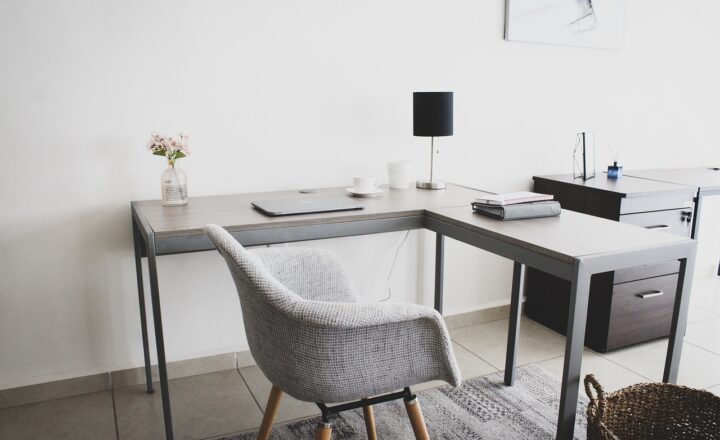How to Create a Productive Study Environment for Remote Learning
November 12, 2024

The shift towards remote learning has changed the landscape of education, but not all students find it easy to adapt to this new format. A productive study environment is crucial for maximizing learning outcomes, maintaining focus, and fostering motivation. If you’re struggling to create an effective space for studying at home, this guide will help you design a conducive learning environment tailored for remote education.
1. Why a Dedicated Study Space Matters
Creating a dedicated study space can significantly enhance your study habits. Here are a few reasons why:
- Minimized Distractions: By setting aside specific areas for studying, you can limit distractions that often come from other parts of the home, such as the living room or kitchen.
- Establishing Routine: A dedicated study space encourages routine, making it easier to transition into study mode when you sit down at your desk or table.
- Mental Cues: Having a specific area for studying trains your brain to associate that space with focus and productivity, enhancing your ability to concentrate even when faced with the temptations of home life.
Consider the implications of a dedicated study space, as it can be a game changer for your remote learning experience.
2. Picking the Right Location
The first step to a productive study environment is choosing the right location. Factors to consider include:
- Quiet Space: Seek out areas that minimize noise and distractions. If possible, locate your study space away from high-traffic areas of your home.
- Comfortable Temperature: Ensure your study space is well-ventilated and temperature-controlled, so you won’t be distracted by discomfort while studying.
- Good Lighting: Select a spot with ample natural light, or invest in good quality, adjustable lighting. Proper lighting can reduce eye strain and help you stay awake and alert.
Moreover, try to position your study area near resources like textbooks or a printer to make studying more efficient.
3. Organizing Your Study Area
An organized study area can greatly improve focus and productivity.
- Declutter Your Space: Remove unnecessary items and distractions. Keep only essentials like your laptop, books, and stationary on your desk. Too much clutter can hinder concentration.
- Utilize Storage Solutions: Implement shelving, drawers, and organizers to keep materials sorted. Invest in file folders for loose papers and a pen holder for stationery items.
- Incorporate Personal Touches: Add personal elements like motivational quotes, plants, or photos to create an inviting atmosphere without overcrowding your space. Balance is key!
A tidy and personalized workspace promotes better focus and invites creativity.
4. Ergonomics: Comfort and Functionality
Comfort is essential for long study sessions. To create an ergonomic study space, consider the following:
- Chair Selection: Choose a chair that offers good back support. Consider adjustable options so that it can accommodate different heights.
- Desk Height: Ensure your desk height aligns with your chair. Your arms should rest comfortably at a 90-degree angle when typing.
- Monitor Placement: Position your computer screen at eye level to prevent neck strain. If you use a laptop, consider a separate monitor or a laptop stand.
Investing in a comfortable setup leads to prolonged study sessions without discomfort, allowing you to focus on your studies.
5. Minimizing Disruptions and Setting Boundaries
To maximize productivity in a home environment, it’s vital to minimize both internal and external distractions:
- Inform Your Household: Communicate with family or roommates when you’ll be studying. Establishing clear boundaries can help you avoid interruptions during study time.
- Use Noise-Cancelling Headphones: To further enhance focus, consider investing in noise-cancelling headphones. Good music or ambient sounds can also improve concentration, allowing you to tune out distractions.
- Set a Timer: Implement techniques like the Pomodoro Technique (study for 25 minutes, followed by a 5-minute break). This can help maintain your concentration while ensuring you take necessary breaks to recharge.
Boundaries are crucial to creating that focused, productive study experience that you desire.
6. Incorporating Technology Wisely
Technology plays a vital role in remote learning, but it can also create distractions. Here are ways to maximize technology for productivity:
- Use Digital Tools for Organization: Apps like Trello, Notion, or Microsoft OneNote can help organize tasks and notes efficiently. Keep track of your assignments and deadlines all in one location.
- Limit Social Media Use: Disable notifications and avoid social media during study time. Social distractions can quickly derail productivity and focus.
- Harness Online Resources Effectively: Make use of course materials, online lectures, and educational videos to supplement your learning without losing track of time on unrelated content.
Employing technology effectively will certainly give you more opportunities to structure a productive study plan.
7. Evaluating and Adjusting Your Environment
Remember that creating a study environment isn’t a one-time effort. It requires ongoing evaluation and adjustment. Here are a few tips:
- Reflect on Your Productivity: At the end of each week, take time to reflect on what aspects of your study environment are working and which aren’t. Identify any challenges affecting your focus and address them proactively.
- Be Open to Changes: Don’t hesitate to rearrange your space, change furniture, or experiment with different organizational methods to find what works best for you.
- Stay Updated on Ergonomics: As your study habits and technology evolve, keep learning about ergonomics to sustain your health and comfort while studying for long periods of time.
Continuous improvement ensures that your study environment evolves alongside your learning requirements.
Conclusion
A productive study environment is essential for success in remote learning. By identifying a suitable location, organizing your space, incorporating ergonomics, minimizing distractions, and utilizing technology wisely, you can create an atmosphere conducive to learning. Remember to continuously evaluate and adjust your environment to ensure it meets your evolving needs.
With these strategies, you’ll empower yourself to excel in your studies and make the most of your remote learning experience. Create your ideal study space today and cultivate the focus and motivation you need to thrive in this new learning landscape!








